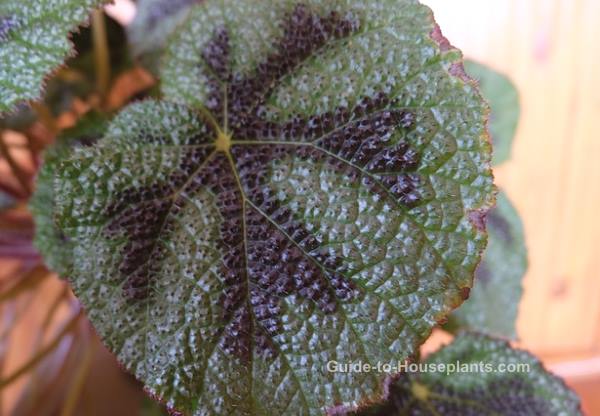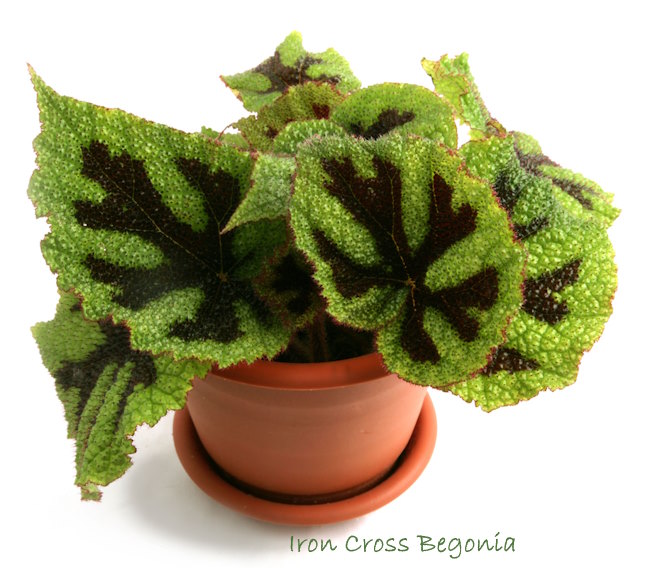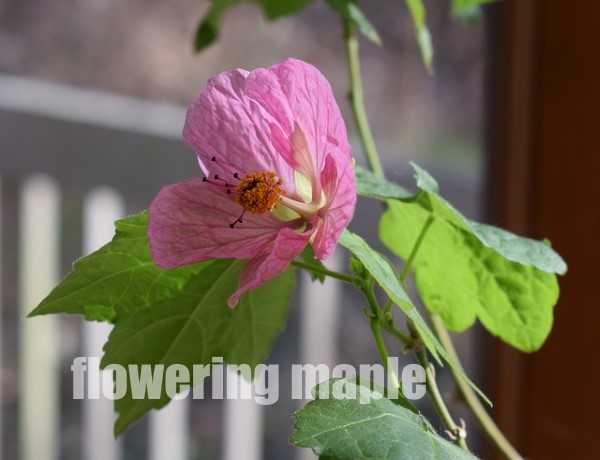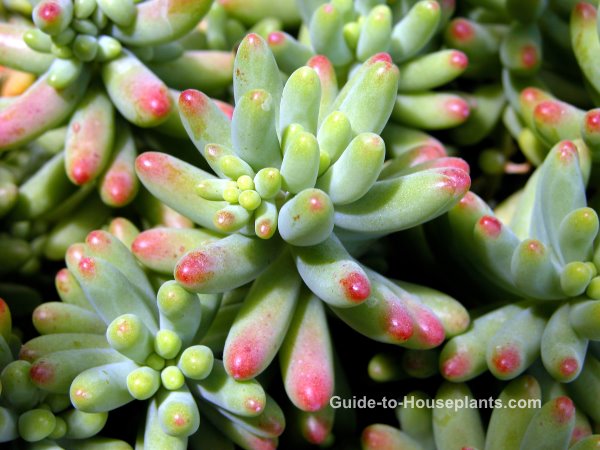Iron Cross Begonia Plant Care
Iron cross begonia leaves are easily recognizable. Each bright-green puckered leaf is marked with a reddish-brown iron-cross pattern in the center. It makes a handsome addition to your home.
In this guide, you'll get care tips for growing begonias indoors, including how to water, when to repot, why you want to pinch your houseplant, and more.
Get to Know Iron Cross Begonia Plant
Known botanically as Begonia masoniana, this eye-catching plant has origins in Southeast Asia.
You may see sprays of pinkish-white flowers in spring and summer, but these blooms are insignificant compared to the magnificent foliage. Pinching off flower buds will promote bigger, healthier leaves.
How big does it get? Mature plants may reach a height up to 1 ft (30 cm).
Is it toxic to cats and dogs? Yes. According to the ASPCA, iron cross begonia contains soluble calcium oxalates, which are toxic.
Iron cross begonia looks stunning when planted with other fancy-leafed begonias, such as Begonia Rex. Their contrasting leaf textures, colors and patterns complement each other in a dish garden.
If your plant suddenly collapses and shrivels up, don't give up on it. It's not uncommon for this begonia to go dormant in winter. While it's tempting to overwater a withered plant -- stop watering during dormancy. What this handsome begonia really craves is high humidity. Cover the plant with plastic or a glass cloche and keep the plant around 60°F/16°C for 6-8 weeks. You'll see new leaves appear.
 Distinctive markings make this fancy-leaf begonia a beautiful addition to your houseplant collection.
Distinctive markings make this fancy-leaf begonia a beautiful addition to your houseplant collection.Growing Iron Cross Begonia Year-Round
Repot in spring. Move your plant up to a pot only 1- to 2-inches larger. Using a small pot with a drainage hole will help to prevent overwatering. Tamp down the soil gently with your fingers so that it doesn't pack too tightly -- begonias like a little air around their roots.
Pinch your plant. Is your begonia too tall and leggy? You can pinch off stems to keep it compact. Don't toss out those stem cuttings either -- propagate them for more plants. (See "Propagation" below). Leggy plants may indicate the plant isn't getting enough light, especially if it's "reaching" toward the window.
Don't overwater. This is one of the few problems with growing begonias. Begonia masoniana has rhizomatous roots that store water, so allow the soil to dry out slightly between waterings.
Watch for powdery mildew on leaves and stems. Poor air circulation and high humidity are favorable conditions for this dusty, white fungus. Cut off affected leaves and be sure your plant has air circulation around it. However, keep it away from heat/AC vents, which can be drying. Treat foliage with a fungicide when needed.
Something bugging your begonia? Peaty potting mixes that begonias prefer may attract fungus gnats. Isolate an infested plant to prevent these tiny pests from invading your other houseplants.
 Pebbly texture and dramatic markings make this begonia eye-catching. Image ©istock
Pebbly texture and dramatic markings make this begonia eye-catching. Image ©istockIron Cross Begonia Care
Light: Give your iron cross begonia bright, indirect light. You'll get the best leaf color this way. If you're using fluorescent lights, keep the light on 14 hours a day -- that's the equivalent of about 8 hours of daylight.
Water: Water thoroughly, allowing the top 1 in (2.5 cm) of soil to dry out between waterings. Avoid getting water on the leaves because they spot easily and are prone to mildew and other fungus.
Humidity: This fancy-leaf begonia likes 50% relative humidity or higher. If the air in your home is dry, use a cool-mist humidifier or place pot on a tray of wet pebbles to increase humidity. Grouping tropical plants such as begonias, ferns and orchids also helps to increase the moisture in the air around them. Misting begonias is not a good idea because it can promote powdery mildew and fungal diseases.
Temperature: Average room (65-75°F/18-24°C). Begonias are not cold-tolerant and can be damaged by temperatures below 50°F/13°C.
Soil: Peat moss based with added perlite and/or vermiculite for faster drainage. African violet potting mix is ideal.
Fertilizer: Feed monthly year-round with a 10-10-5 water-soluble fertilizer diluted by half. Fertilize when the soil is already moist to avoid fertilizer burn. Don't feed a dormant plant.
Propagation: Stem cuttings root easily. Take 3 in (8 cm) stem cuttings with leaves in early summer and root them in moist, sterile potting mix. Cover with plastic or a glass cloche to raise humidity around it until new leaves form.


